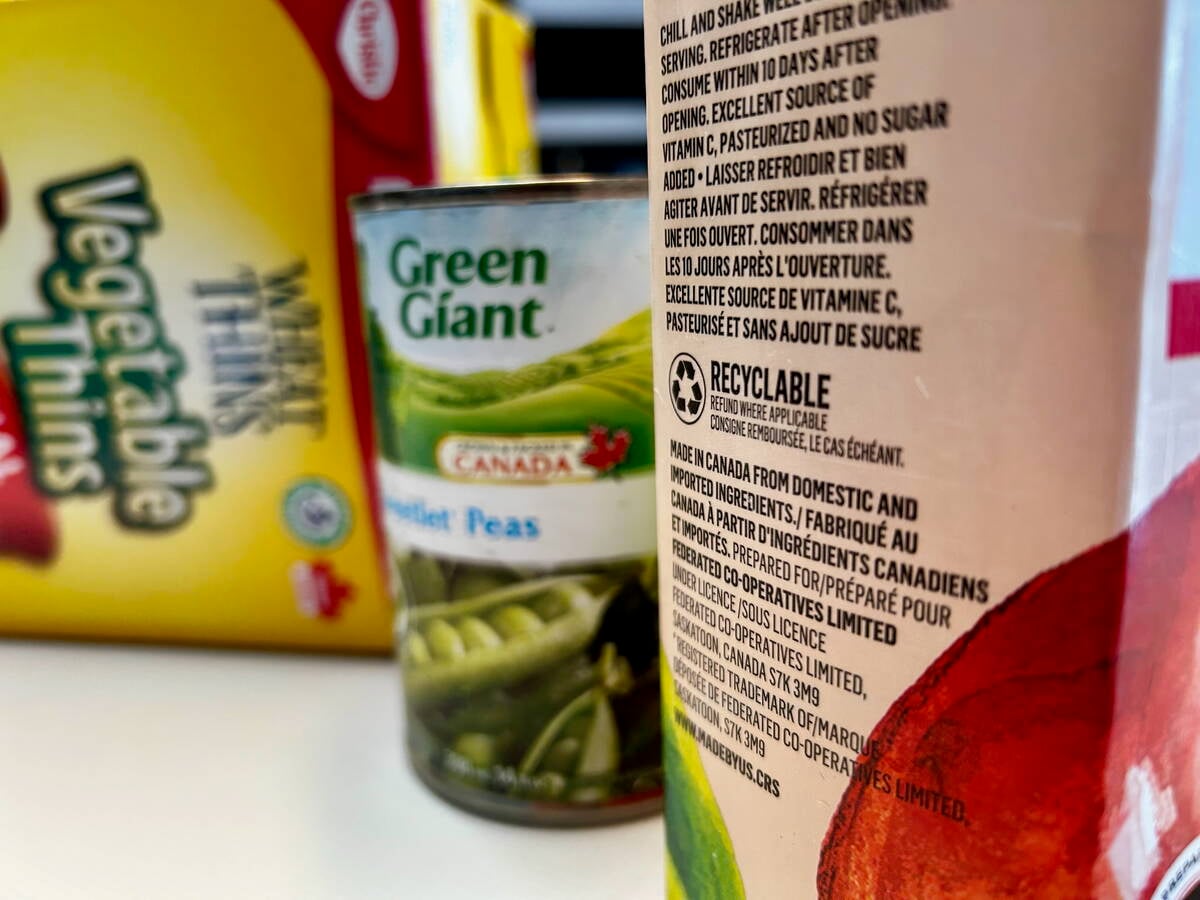Grain bags have a lot of attractive features for farmers.
But are they good for storing canola?
The answer is both yes and no, says Digvir Jayas, a University of Manitoba professor.
“They market these bags as sealed, air tight, but our research shows that they are not as air tight as the companies would have us believe,” said Jayas, in a recorded video presentation at a recent Manitoba Canola Growers Association workshop.
Keeping the bags air tight is critical for bagged storage because trapped carbon dioxide emitted by the canola keeps it fresh.
Read Also

Unclear food labels hinder Canada’s ‘buy local’ surge
“Maple-washing” on Canadian food packaging makes label claims hard to keep straight and hurts both farmers and consumers trying to buy Canadian, economist says.
Jayas emphasized that the bags, first developed in Argentina 20 years ago, were designed to store dry grain for short durations.
Based on experiments conducted last winter, he found that 20-tonne bags of canola filled at eight per cent moisture survived more or less intact for 10 months.
Moisture matters
At 10 per cent moisture, there was some spoilage in the top layer, but he estimated that it could last as long as six months in the bags with little damage.
But at 14 per cent, the grain suffered heavily from the effects of mould, insects and rodents, problems which became noticeable after eight weeks.
The grain at the lower moisture percentages was “free flowing” and easily handled by the extractor. But the 14 per cent canola was badly caked, riddled with vermin colonies, had to be removed with a front-end loader tractor, and was livestock-feed quality at best.
“You should not be storing canola in these bags at 14 per cent moisture content under Manitoba conditions,” said Jayas.
Grain bags, typically nine to 10 feet in diameter and up to 250 feet long, are pitched by marketers as a handy alternative to fixed, metal bin storage, offering airtight, temporary in-field storage for times when bumper crops overflow a farmer’s storage capacity, or for niche and identity-preserved crops that need to be segregated.
Disagrees
Aaron Yaeger of Humboldt-based Grain Bags Canada, who has been using them on his own farm and selling the devices since 2005, disagreed with Jayas’ findings.
“I don’t agree with that. We’ve done 14 per cent and even up to 15 per cent canola for years on our farm. Hundreds of farmers in Saskatchewan could prove that wrong,” he said, following a grain bag demonstration at the MCGA workshop.
“If you have a properly closed bag, the grain is a living entity and it will consume the oxygen. For grain to spoil, it needs oxygen.”
Yaeger added that if suitable precautions are taken to seal the bag, such as piling a sloped layer of dirt on top of the both ends, and taking steps to prevent ravens from pecking holes in the top, canola packed at 14 per cent moisture at harvest should be good until the following summer.
Different methods
In Jayas’ experiment, he noted that the bag was sealed with boards nailed together, and claimed that method could have allowed water to infiltrate.
Mice haven’t been a big problem, nor have deer, but ravens are the bag users’ worst nightmare.
“If they do come, and you shoot one, you hang the dead bird up near the bag. Then nobody’s coming,” said Yaeger.
He added that he has stored oats in bags for up to three years with only limited spoilage. But having that storage alternative meant that he could wait for the price to climb from $1.40 to $3.50 before taking it to town.
Also, conventional bin storage allows grain to dry out, which means that precious tonnage is lost. Bags, in his opinion, are superior because they don’t allow the grain to breathe.
“If you put grain in a bag for three months, the bag ends up being free, because you didn’t have any shrinkage,” said Yaeger.
Also, apart from the lower fixed costs and flexibility offered by bags, their narrow diameter allows the grain to cool in as little as a few days, rather than well into the winter.
“The only guys knocking bags are the ones who don’t have them,” he said.














